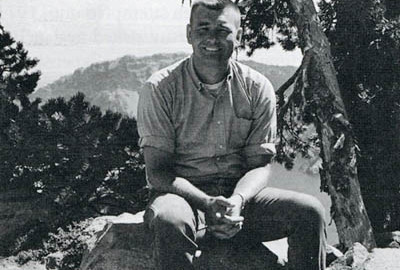Gradually I found myself arguing with people from the Park Service and at the meetings, and I became an adversary. I was an unwelcome participant and thought of as a non-team player. It got to the point where we really weren’t speaking to each other, in particular Jim Larson and Shirley Clark. Things were said and I realized my position with Park Service was very shaky. But I was determined not to let this be swept under the rug, even if it meant that I wouldn’t be hired as a full time limnologist. I’m not saying this to glorify myself, but for me it was a Bonsai attack and I was going to carry it through and make the Park Service address this issue of sewage – – even if it meant that I lose my job with them and maybe even with the Corps. This subsequently came to pass because Bob Benton, the superintendent who followed Jim Rouse, wrote a letter in 1987 to my employer, the U.S. Army Corps of Engineers. He complained about my activism and more or less suggested that the Corps fire me for cheating them by using their time to pursue my issues [at Crater Lake]. I had to respond with a letter to defend myself and I talked to my supervisor about this. Fortunately the Corps supported me, and felt that there was no wrongdoing on my part at all. I wrote a letter to the Director of the National Park Service pointing out that this superintendent was trying to get my scalp. I never received a response from the Director and was really angry (26). I felt that they were trying to get rid of me, so I continued to harass them for years until they finally removed the septic leach field system off the rim and began piping it down the hill in 1991 (27). At that point I finally let up then on my attacks.
Back to this letter where I’m being dismissed in the fall of ’84. I got a call from Jim Larson one day and he said Doug we’re going to create this new job, limnologist, and I thought you’d be interested. You’ve always said this is something you promoted, not yourself necessarily, but you’ve promoted the idea of a permanent limnologist at Crater Lake and we think the time has come.
Was that after the legislation?
Yes, it was in 1984. He said we finally have the money, so send your application to us. I was thrilled to say the least, since this is what I had dreamed about. I submitted all the forms, and believed I was qualified because I had worked there [Crater Lake] at least 14 summers. 1 knew the lake, knew a lot of the people and knew the problems. I had a Ph.D. and about 50 publications in journals. I thought I was highly qualified. It was in August, ’84 up there when I remember Mark Forbes and I went to breakfast [at the cafeteria]. He said, “Doug, I want to talk to you after we’re done here.” I said okay so we went out and we sat on the little rock wall overlooking the lake. He said, “I hate to tell you this, but you were passed over for this job.” I was shocked, but then again, I wasn’t shocked. I was pretty sad about it and sitting here thinking about it, I get a little tear in my eye. He said that they hired a guy who was inside the Park Service. I asked who’s that, and he said Gary Larson at the Smoky Mountains – – I think that’s where he was at the time. Anyway, he said they hired him. I asked whether Gary had ever worked at Crater Lake? No, he’s never worked here. Is he a limnologist? Well no, he’s an aquatic ecologist. That’s all right. Has he ever published a paper about Crater Lake? No, but they prefer to have someone within the Park Service. I said I’m not going to protest. I accepted it and the following summer in ’85, I worked the summer to make the transition, setting things up for Gary and continuing my work. I worked with a guy named Cliff Dahrn who’s now a full professor in the biology department at the University of New Mexico during the summers of ’84 and ’85.


